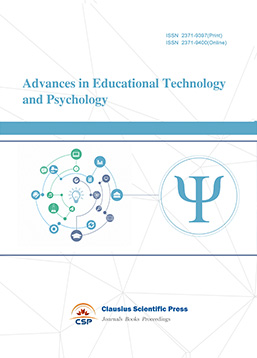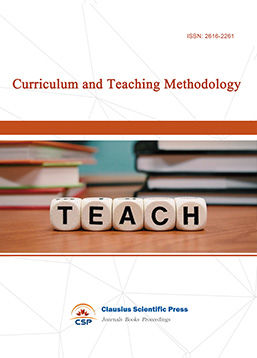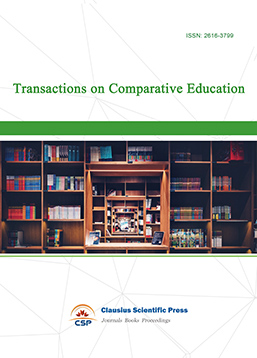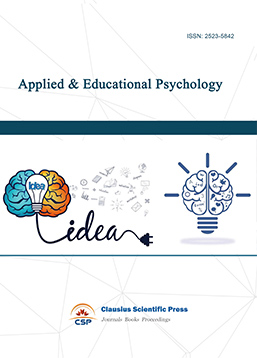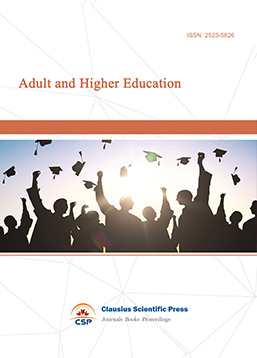A Review on Current Status and Development Trends in English Teaching Research in Vocational Universities
DOI: 10.23977/avte.2025.070205 | Downloads: 14 | Views: 855
Author(s)
Jianghua Wu 1
Affiliation(s)
1 Foreign Language Teaching Department, Hainan Vocational University of Science and Technology, Haikou, 571125, China
Corresponding Author
Jianghua WuABSTRACT
This paper provides a comprehensive review of the current status and development trends in English teaching research within vocational universities. By analyzing recent literature, we explore key themes such as the integration of information technology, curriculum reforms, teacher professional development, and alignment with industry needs. The study highlights both the achievements and challenges in these areas and offers insights into future research directions to enhance English teaching effectiveness in vocational education.
KEYWORDS
Review; English teaching; Vocational universitiesCITE THIS PAPER
Jianghua Wu, A Review on Current Status and Development Trends in English Teaching Research in Vocational Universities. Advances in Vocational and Technical Education (2025) Vol. 7: 30-33. DOI: http://dx.doi.org/10.23977/avte.2025.070205.
REFERENCES
[1] Gill, M. (2015). Bridging the skills gap through vocational education. International Journal of Human Resource Management and Research, 5, 1-9.
[2] Salim, M. A., & Masyhudianti, U. K. (2024). The Language Landscape: Exploring English Proficiency of Vocational University Students through TOEIC Simulation. Essence: Journal of English Language Teaching, Linguistics, and Literature, 1(1), 58-69.
[3] Basturkmen, H. (2022). Current trends in ESP research in the Asia Pacific region. World Englishes, 41(4), 512-522.
[4] Megayanti, T., Busono, T., & Maknun, J. (2020, April). Project-based learning efficacy in vocational education: Literature review. In IOP Conference Series: Materials Science and Engineering (Vol. 830, No. 4, p. 042075). IOP Publishing.
[5] Adijaya, M. A., Armawan, I. K., & Kristiantari, M. G. R. (2023). Mobile-Assisted Language Learning (MALL) Innovation for Vocational Education. International Journal of Language Education, 7(3), 469-480.
[6] Yan, W. A. N. G. (2016). The Problems and Countermeasures of Vocational English Teaching Practice in Higher Vocational Education. Cross-Cultural Communication, 12(12), 35-39.
[7] Tafazoli, D. (2024). From virtual reality to cultural reality: integration of virtual reality into teaching culture in foreign language education. Journal for Multicultural Education, 18(1/2), 6-24.
[8] Paran, A. (2006). Literature in Language Teaching and Learning. Case Studies in TESOL Practice Series. Teachers of English to Speakers of Other Languages, Inc. 700 South Washington Street Suite 200, Alexandria, VA 22314.
[9] Richards, J. C., & Farrell, T. S. C. (2021). Professional development for language teachers: Strategies for teacher learning. Cambridge University Press.
[10] Çakır, N. (2024). Virtual reality games in foreign language education: A systematic review. Language Education and Technology, 4(1).
[11] Farrell, T. S. C. (2022). Reflective practice in language teaching: Research-based principles and practices. TESOL Journal, 13(3), e692. https://doi.org/10.1002/tesj.692
[12] Harris, A., & Jones, M. (2010). Professional learning communities and system improvement. Improving schools, 13(2), 172-181.
[13] Nguyen, T. C. N. (2017). Aligning English for Specific Purposes (ESP) curriculum with industry needs: Language practices for Vietnam's globalised workplaces (Doctoral dissertation, Queensland University of Technology).
[14] Belcher, D. (2022). Trends and innovations in English for specific purposes (ESP) teaching. Language Teaching Research, 26(2), 159-170.
[15] Otache, I. (2022). Enhancing graduates' employability through polytechnic–industry collaboration. Industry and Higher Education, 36(5), 604-614.
| Downloads: | 16170 |
|---|---|
| Visits: | 884700 |

 Download as PDF
Download as PDF